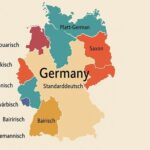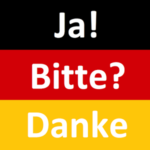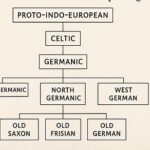
When people think of the German language, they often picture bustling Berlin cafés or the crisp consonants of a Bavarian news anchor. But the reach of German extends far beyond the borders of Germany itself. From Namibia to New York, from Brazil to Belgium, the German language has taken root in unexpected places, shaping communities, education systems, and cultural identities across the globe.
In this final article in our series on the German language, we’ll explore how German has spread internationally – through history, migration, education, and media – and why it continues to matter in a globalized world. Whether you’re a heritage speaker in Argentina or a language student in Tokyo, German connects people across borders and generations.
The Global Footprint of German: Who Speaks It and Where?
German is the most widely spoken native language in Europe, with around 95 million native speakers. But millions more speak it as a second language across the globe:
- European Union: German is an official language of the EU and a working language of several key institutions. It’s spoken natively in Germany, Austria, parts of Switzerland, Liechtenstein, Luxembourg, and regions of northern Italy (South Tyrol).
- Eastern Europe: German has historical roots in Poland, Hungary, Romania, and the Czech Republic due to centuries of migration and empire.
- North America: German communities exist in the U.S. (especially Pennsylvania Dutch regions, the Midwest, and Texas) and in parts of Canada.
- South America: Brazil and Argentina have significant populations of German descent, some of whom still maintain the language.
- Africa: In Namibia, German is a recognized national language with colonial-era roots.
- Asia-Pacific: German is taught widely in schools and universities in India, Japan, and Australia as part of cultural and economic exchanges.
Historical Migration: How German Spread Overseas
Much of the global presence of German stems from waves of migration in the 18th and 19th centuries:
- Religious dissenters like the Amish and Mennonites brought their dialects to North America.
- Economic migrants settled in South America, especially southern Brazil, where towns like Blumenau still preserve German traditions.
- Colonial expansion brought the German language to Africa and parts of the Pacific during the Kaiserreich era.
In many of these places, German-speaking communities maintained their language for generations, often mixing it with local languages and dialects.
Heritage German: Languages That Evolved Abroad
When German travels, it changes. Across the globe, heritage dialects have evolved into unique linguistic forms:
- Pennsylvania Dutch is a form of Palatine German spoken by Amish and Mennonite communities in the U.S.
- Riograndenser Hunsrückisch is a German dialect spoken in southern Brazil that blends Hunsrückisch with Portuguese.
- Namibian German (Südwesterdeutsch) includes loanwords from Afrikaans and English.
These forms reflect cultural adaptation and resilience. They are living languages, not static relics.
German as a Foreign Language: A Global Trend
Today, more than 15 million people worldwide are learning German as a foreign language. According to the Goethe-Institut:
- German is the third most popular foreign language taught in the EU (after English and French).
- It’s one of the top 10 most-studied languages globally.
- German is especially popular in Eastern Europe, India, and China, where economic ties to German-speaking countries drive interest.
Germany’s role as a global economic leader, combined with its cultural prestige and academic reputation, makes learning German a strategic asset.
➡️ Related reading: The Evolution of the German Language: A Cultural History
The Role of the Goethe-Institut and Cultural Diplomacy
Founded in 1951, the Goethe-Institut is Germany’s international cultural institution, dedicated to promoting German language and culture abroad. With over 150 locations in more than 90 countries, it offers:
- Language courses and exams
- Teacher training
- Cultural events
- Support for German language departments in schools and universities
The Goethe-Institut also helps foster intercultural dialogue and showcases German arts, music, and literature on the world stage.
German Media and Global Cultural Influence
Thanks to digital media, German-language content now reaches global audiences more easily than ever. Examples include:
- Film and television: Series like Dark (Netflix) and Babylon Berlin have attracted international fans.
- Music: German-language hip-hop, techno, and indie scenes have global followings.
- Publishing: German literature – both classic and contemporary – is widely translated.
- News and analysis: Deutsche Welle offers multilingual content that promotes global access to German viewpoints.
All of this increases the visibility and desirability of German beyond national borders.
Academic and Scientific German
Historically, German was the lingua franca of many scientific disciplines. In the 19th and early 20th centuries, fields like chemistry, physics, and philosophy were dominated by German-language publications.
Although English has largely replaced German in academia, many German universities continue to attract international students. Programs in engineering, natural sciences, and humanities often offer courses in both German and English.
Institutions like the DAAD (German Academic Exchange Service) support international collaboration and scholarships.
German in the Digital Age
The rise of the internet hasn’t diminished German’s relevance. On the contrary:
- German is one of the top 10 most-used languages online.
- German Wikipedia has over 2.8 million articles, making it the third largest by language.
- Social media platforms, language apps, and forums support vibrant global German-speaking communities.
Digital spaces allow heritage speakers, learners, and fans of German culture to connect and keep the language alive.
Challenges and Opportunities
Despite its global reach, the German language faces challenges:
- Decline in heritage use: Many third and fourth-generation German descendants no longer speak the language.
- Competition from English: As English dominates science, business, and the internet, German must offer distinct value.
- Political sensitivities: In post-colonial regions, German’s role is sometimes complicated by history.
Still, there are powerful opportunities:
- Dual-language education in immigrant communities
- Heritage language revival initiatives
- Tech-enabled learning for younger generations
- Cross-cultural projects in literature, film, and music
German remains relevant because it adapts, includes, and engages.
➡️ Explore its deeper identity role: From Poets to Politicians: German’s Role in Identity and Nation-Building
A Language Without Borders
German may have its roots in Europe, but it has branches all over the world. Whether spoken in a South American village, learned in an Indian classroom, or streamed in a Netflix drama, the German language continues to evolve, inspire, and connect.
It’s not just about vocabulary or grammar – it’s about memory, migration, and meaning. The global German of today is a mosaic of voices, shaped by history but looking toward the future.
If you’re part of the global German-speaking world – as a native, a learner, or simply a fan – you’re participating in a living tradition that crosses time zones and borders.
Related articles:
➡️ The Evolution of the German Language: A Cultural History
➡️ The Birth of German: From Proto-Germanic to Old High German
➡️ Luther’s Language Legacy: How One Translation Shaped German
➡️ Dialects vs. Standard German: Why Both Still Matter
➡️ From Poets to Politicians: German’s Role in Identity and Nation-Building







